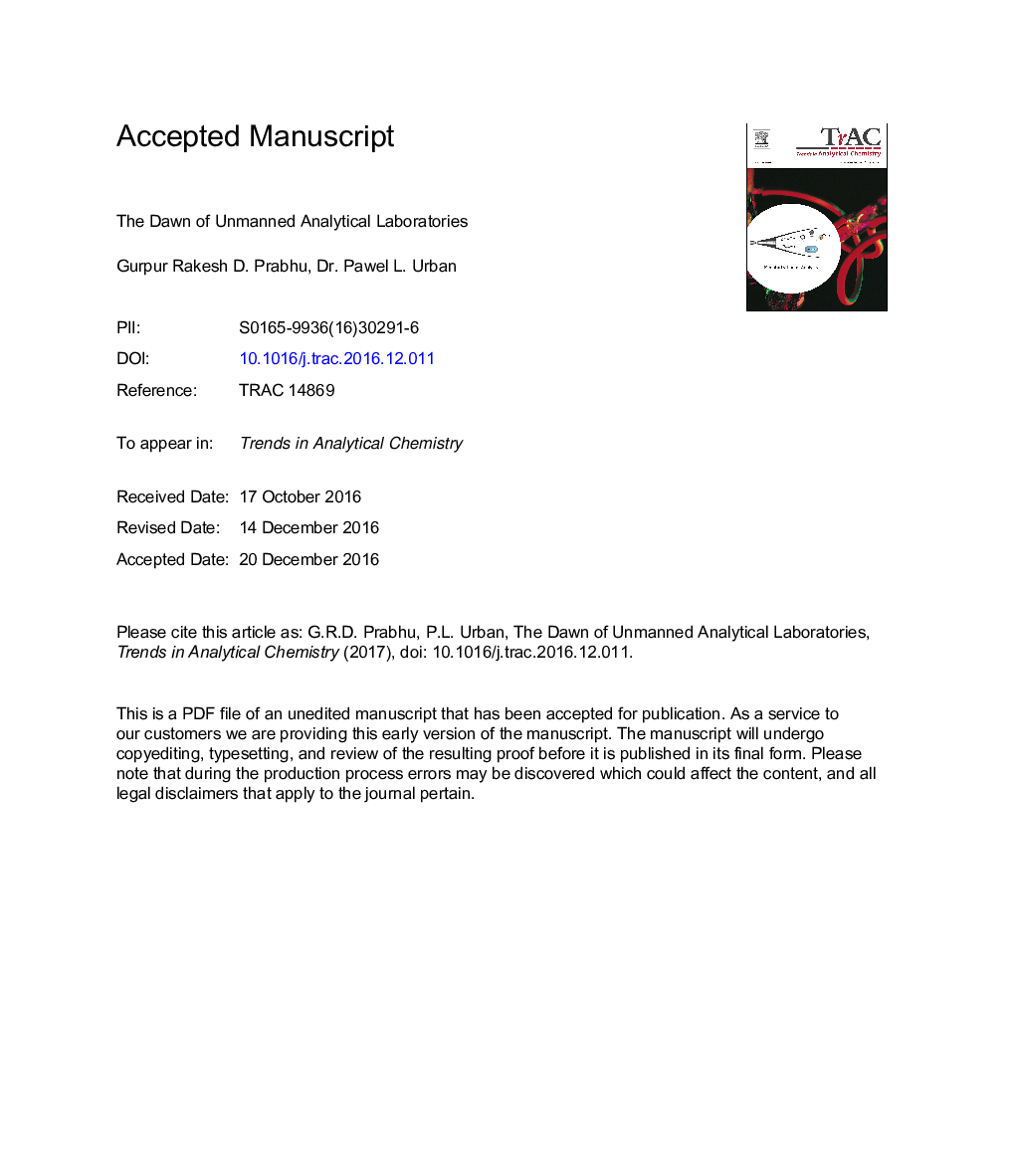| Article ID | Journal | Published Year | Pages | File Type |
|---|---|---|---|---|
| 5141665 | TrAC Trends in Analytical Chemistry | 2017 | 53 Pages |
Abstract
The twentieth century has brought enormous developments in instrumentation for chemical analysis. However, most of the state-of-the-art analytical instruments still require a substantial investment of human labor. In the twenty first century, some laboratories need to analyze thousands of samples every day, at the same time maintaining high repeatability. To cope with the growing requirements of modern science and industry, it is necessary to automate most or the entire sample handling steps. Thus, a number of automated analytical approaches have been developed, including: continuous flow analysis, flow injection analysis, microfluidic systems, micro total analysis systems, microtiter plate-compatible systems, centrifugal analyzers, cartridge analyzers, autosamplers, multi-axis robots, and total laboratory automation facilities. Automation of chemical analyses speeds up tedious operations related to the handling of samples and reagents, thus creating new possibilities for science and industry. However, when automating analytical laboratories, socioeconomic and safety aspects need to be taken into account.
Related Topics
Physical Sciences and Engineering
Chemistry
Analytical Chemistry
Authors
Gurpur Rakesh D. Prabhu, Pawel L. Urban,
